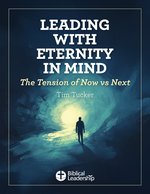Rethinking planning strategies

If you've been around long enough in the leadership circles, you have most likely heard of the planning exercise known as the SWOT (strengths, weaknesses, opportunities, threats) analysis. However, I fear you may be thinking about it incorrectly.
My colleague and I recently completed a day-long strategy session with the top leaders of a leading manufacturer in the eyeglass industry. It was refreshing to the participants when they truly learned the true nature of a SWOT analysis. It went on to generate a healthy planning session of prioritizing and strategic thought. Here are the elements that make SWOT so powerful:
Internal and external
Many leaders think that a SWOT analysis is exclusively looking at themselves. They seek to create a list of their strengths, weaknesses, opportunities and threats. However, there is a subtle but powerful shift required. Strengths and weaknesses are internal. Opportunities and threats are external. For example, if you have someone on your team who is not doing their job, it’s not a threat—it’s a weakness. Look inside for strengths and weaknesses—and outside for opportunities and threats.
Attribute and impact
Another mistake teams make when conducting a SWOT exercise is listing only the attribute without the resulting impact. They will list their strengths, such as strong financials, a cohesive team, or the latest software. But what do those strengths provide? Consider both the attribute and the impact.

Analysis and fit
Some people discount the impact of a SWOT analysis. They claim that it doesn’t prioritize issues or that it generates too many ideas but no way of choosing which ideas are best. Of course, it depends on what you do with the information it produces.
It’s one thing to think of this analysis as a stand-alone practice. But it was meant to fit into a bigger planning process. The leaders from the manufacturing company I mentioned above generated at least 15 items under each of the SWOT categories. They are now involved in prioritizing those lists.
In the development of your mission, vision, values, goals and action plans, this leadership tool gets you started from a more informative platform. It makes the entire process more effective when you engage a true SWOT.
Photo source: istock
| Scott Couchenour has a combined 30 years of experience in ministry, business and entrepreneurship. He has the perspective any leader needs to grow further in their personal and professional life. Scott served as COO and CEO for a national multi-million dollar family-owned business. He has served in his local church as worship leader and various leadership positions. He serves as Trustee on the Nazarene Foundation Board, the Nazarene Theological Seminary Board, and Harmony Village Board. Learn More » |
More on Meetings and Team Building
- How bad virtual habits can become powerful leadership tools (by Scott Cochrane)
- Leadership alignment: realign your team for success with simple adjustments (by Christian Muntean)
- How to unleash the power of the spinal tap leadership principle (by Scott Cochrane)
- How to build values by ringing the bell for what matters (by Scott Cochrane)


